
Table of Contents
Germany is a country renowned for its rich history and vibrant culture. This nation’s identity is captured in its fascinating symbols, each with a unique story to tell. Let’s take explore these symbols, and the essence and spirit of Germany through powerful imagery.
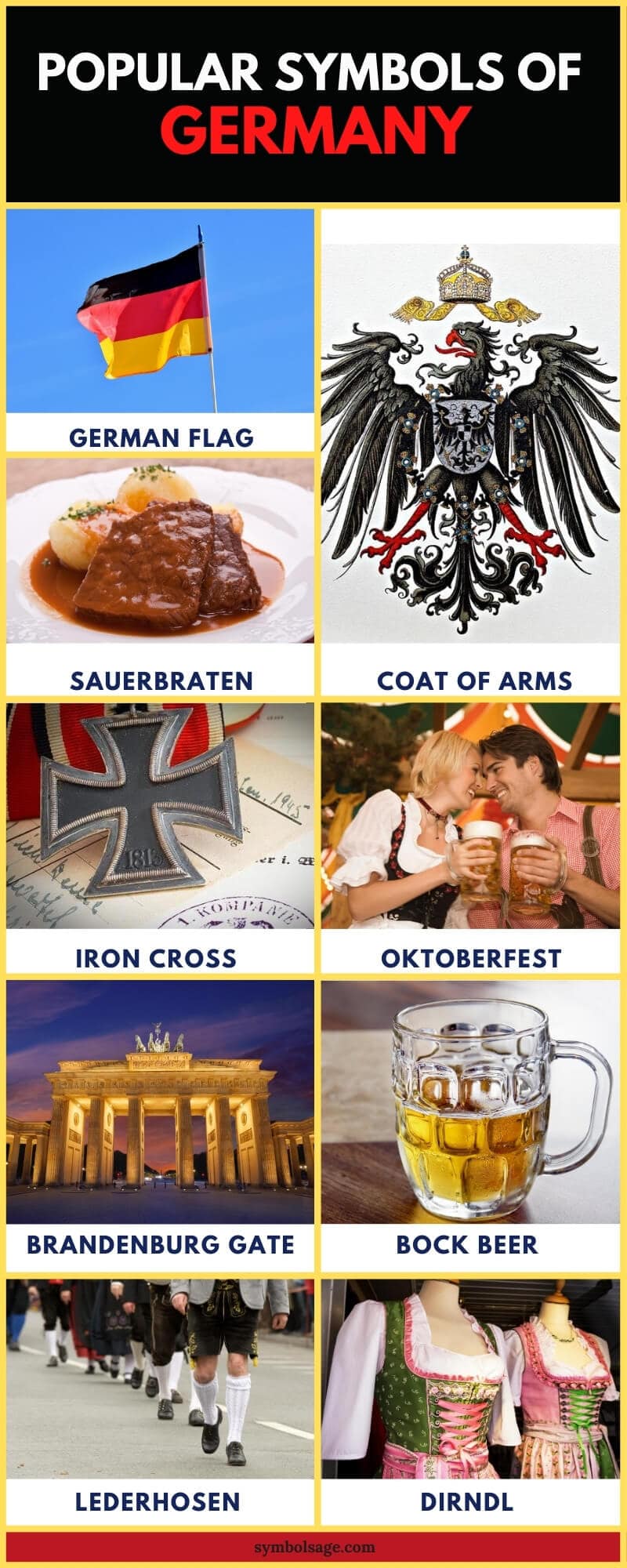
Germany’s identity combines rich history, impactful culture, and solid values. Known for its exact engineering and passion for arts and philosophy, the country stands out as resilient and innovative. Overcoming its challenging past, Germany values efficiency, community, and environmental care. Its varied and lively culture enriches all aspects of its current society.
- National Day: October 3 – German Unity Day
- National Anthem: Deutschlandlied
- National Currency: Euro
- National Colors: Black, red and gold
- National Tree: Royal Oak Quercus
- National Animal: Federal Eagle
- National Dish: Sauerbraten
- National Flower: Cyani flower
- National Fruit: Apple
The National Flag of Germany
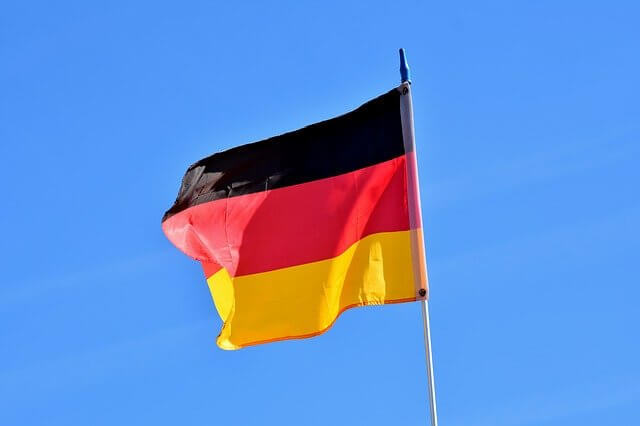
Germany’s flag, adopted in 1949, not 1919, displays three horizontal stripes of black, red, and gold, each of equal size. The flag’s design, featuring black at the top, red in the middle, and gold at the bottom, symbolizes unity and freedom.
These colors also hold historical significance, representing the republican, democratic, and centrist political ideals associated with the 1848 Revolutions, the Federal Republic, and the Weimar Republic.
The flag serves as a key symbol of Germany’s constitutional order, embodying the nation’s values and political history.
Coat of Arms
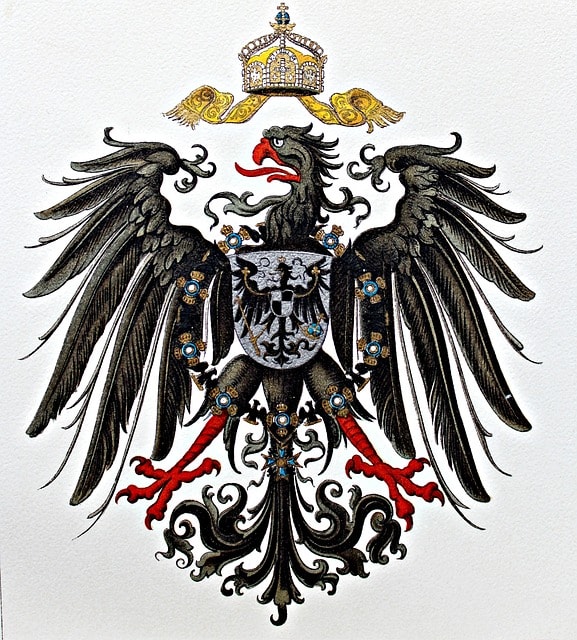
The German coat of arms features a black eagle with red feet and a red tongue and beak on a golden field. This is said to be one of the oldest known coats of arms in the world and today it’s the oldest European national symbol in use.
The black eagle defacing a golden background was recognized as the emblem of the Roman Empire in the 12 century until its dissolution in 1806. It was first introduced as the coat of arms of Germany in 1928 and was officially adopted in 1950.
To the German tribes the federal eagle displayed on the coat of arms was the bird of Odin, the supreme god whom it resembled. It was also a symbol of invincibility as well as a representation of previous German Emperors. It’s now seen on the German passport as well as on coins and official documents throughout the country.
Eisernes Kreuz

Eisernes Kreuz (also called the ‘Iron Cross’) is a famous military decoration formerly used in the Prussian Kingdom and later on in the German Empire, as well as Nazi Germany (albeit with a Swastika in the center). It was awarded for military contributions and bravery in the battlefield.
The medal was discontinued after World War II in 1945 as a military award. Variations of the Iron Cross exist in Germany today, and the symbol is also used by bikers as well as white nationalists. The Iron Cross is also the logo of many clothing companies.
Today, it’s still rated as the most famous military insignia in Germany, but its role has been significantly reduced to that of an emblem on the vehicles of post-war armed forces.
Brandenburg Gate
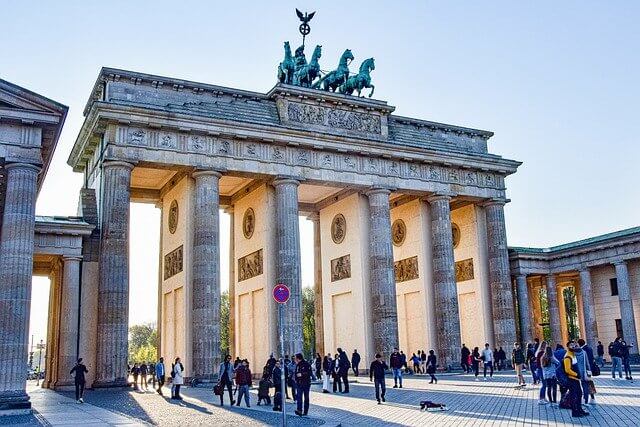
One of the most important monuments of Berlin, the Brandenburg Gate is a symbol and landmark all in one with centuries of history. It’s a symbol of the division of German and the unification of the country and is now one of the most visited places in Berlin.
Built in 1788-91 by Carl Langhans, the sandstone gate has twelve Doric columns which create five separate portals. Of these, the middle one was reserved for use by the royals. The Gate served as a backdrop for Ronald Reagan’s famous speech in 1987 and was reopened in 1989 for the reunification of country when West German Chancellor Helmut Kohl walked through it to meet the East German Prime Minister Hans Modrow, symbolizing unity.
After undergoing restoration that began in late 2000, the gate was officially reopened two years later, but remained closed to vehicular traffic.
The Dirndl and Lederhosen
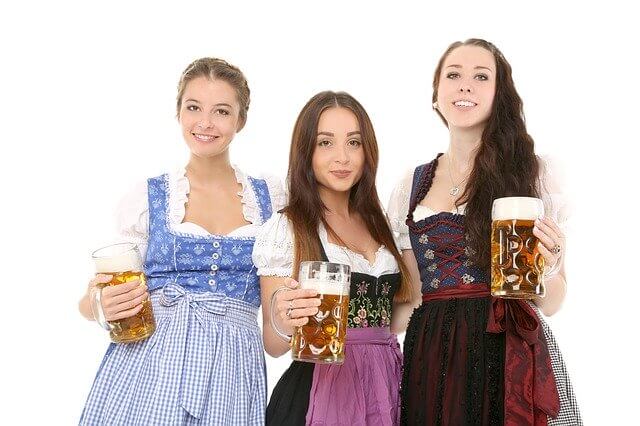
The national dress of the Federal Republic of Germany is the dirndl (worn by women) and the lederhosen (for men). The dirndl is an apron dress with ruffles on it and consists of a blouse or bodice and a skirt. It’s accessorized with decorative buckles and soft, felt shoes with clunky heels.
Back in the 19th century, it was the standard uniform of maids and housekeepers but today it’s worn by all German women, mostly for celebrations.
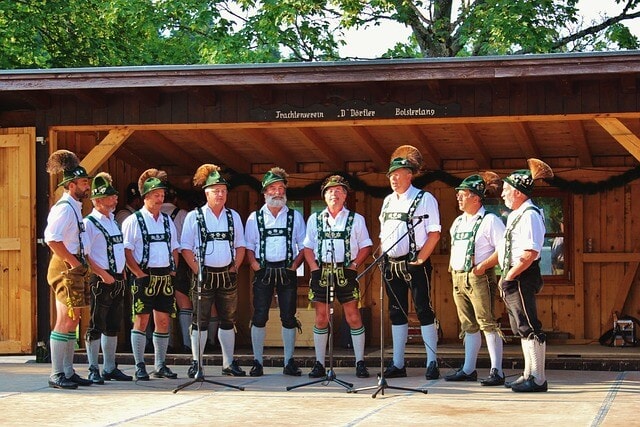
The lederhosen are a pair of short pants made of leather and are usually knee-length. In the past they were worn by working-class men with the haferl shoe, a thick sole made of leather or rubber for farming purposes.
Haferls were easy on the feet and the men were proud of the care that went into handcrafting them. They would also wear an Alpine hat made of wool or warm felt with a large brim to offer them maximum protection from the sun.
While the dirndl and lederhosen are common in all parts of Germany, there are slight differences depending on the region they come from.
Oktoberfest

Oktoberfest is a famous German festival that happens not only in Germany but all over the world. The original Oktoberfest lasted five days and was thrown to celebrate the marriage of the Bavarian Prince Ludwig. Today, Oktoberfest in Bavaria lasts for up to 16 days with over 6 million attendees consuming more than 1.3 m gallons of beer (which is why it’s known as the world’s largest beer festival) and up to 400,000 sausages.
The Oktoberfest tradition first began in 1810 and its main event was a horse race. Over the years, more events have been added to it including an agricultural show, a carousel, two swings, tree climbing competitions, wheel barrow races and many more.
In 1908, mechanical rides were added including the first rollercoaster in Germany. The festival is now one of the most profitable and largest tourist attractions in the country, bringing over 450 million euros to the city each year.
Sauerbraten
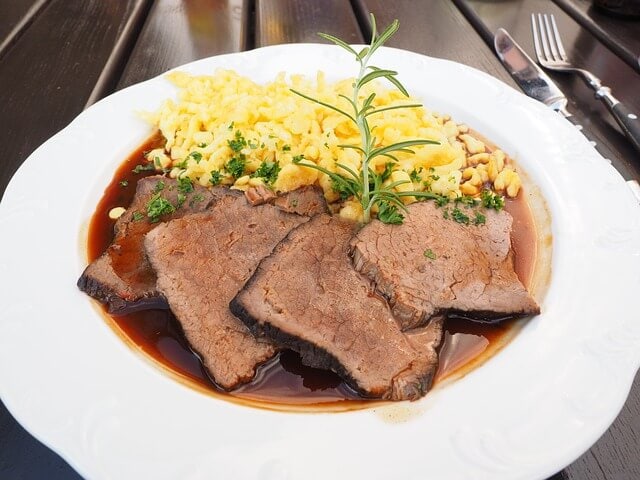
Sauerbraten is the national dish of Germany, made of meat that’s heavily marinated and roasted. It’s mostly made from beef, but can also be prepared from venison, pork, lamb, mutton and horse.
Before roasting, the meat is marinated from 3-10 days in a mixture of red wine or vinegar, herbs, water, seasonings and spices so that it’s beautifully tenderized in time for roasting.
After the required time period, the meat is removed from its marinade and then dried. It’s browned in lard or oil and braised with the marinade on the stovetop or in an oven. It’s left to simmer for over four hours resulting in a delicious, roast. Sauerbraten is sually accompanied by a hearty gravy made from its roasting and is typically served with potato dumplings or potato pancakes.
Sauerbraten is said to have been invented in the 9th century AD by Charlemagne as a way of using leftover roasted meat. Today, it’s served in many German-style restaurants around the world.
Bock Beer
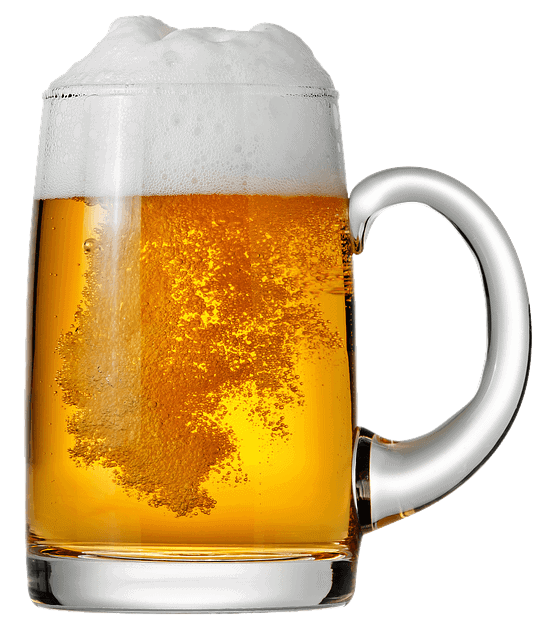
Bock beer is a malty, strong lager that was first brewed by German brewers in the 14th century. Originally, it was a dark beer that ranged from a light copper color to brown. It became highly popular and is now brewed internationally.
The bock style of beer was brewed in a small Hanseatic town called Einbeck and was later adopted by brewers from Munich in the 17th century. Because of their Bavarian accent, the people of Munich had trouble pronouncing the name ‘Einbeck’ and called it ‘ein bock’ meaning ‘billy goat’. The name stuck and beer became known as ‘bock’. After that, a goat was added to the bock labels as a visual pun.
Throughout history, bock has been associated with religious festivals such as Easter, Christmas or Lent. It has been consumed and brewed by Bavarian months during periods of fasting as a source of nutrition.
The Cornflower

The cornflower, also known as bachelor’s button or Cyani flower, is a plant that flowers annually and belongs to the Asteraceae family. In the past, it was a custom for unmarried German men and women to let others know their marital status by wearing the cornflower in their buttonholes.
During the 19th century, the flower became symbolic of the Federal Republic of Germany because of its color: Prussian blue. It’s said that the Prussian Queen Louise was fleeing Berlin when she was pursued by the forces of Napoleon and hid her children in a cornflower field. She used the flowers to weave wreaths for them to keep them quiet and distracted until they were out of danger.
Therefore, the flower became associated with Prussia and not just because it’s the same color as the military uniform of the Prussians. After Germany was unified in 1871, the cornflower became an unofficial symbol of the country and later it was adopted as the national flower.
Wrapping Up
The symbols of Germany weave a story rich in history, culture, and national pride. From the tricolor flag to the majestic eagle, each symbol reflects the spirit of unity, resilience, and innovation that defines Germany. They stand as testaments to a nation’s journey and its enduring values. If you want to learn more about the symbols of other countries, check out our related articles:








